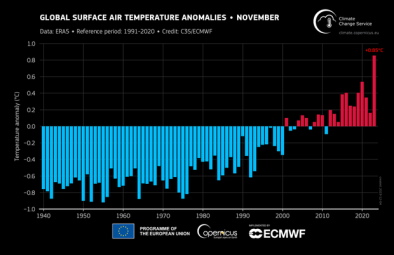Science Source
Taking the Pulse of the Planet
- States that decision-makers, scientists, and the general public want to know the rate at which Earth's system is accumulating heat and the amount by which it will warm in the future
- Explores better ways of measuring global warming to answer these questions
- States that global mean surface temperature (GMST), the most visible sign of a warming climate, relies on air temperature measurements that are influenced by:
- Forcings that are external to the climate system (e.g., volcanic eruptions and aerosols and the 11-year sunspot cycle)
- Internal fluctuations (weather phenomena, monsoons, El Niño/La Niña, and decadal cycles)
- States that natural temperature variability is much more muted in the ocean than in the atmosphere, owing to the ocean’s greater ability to absorb heat (its heat capacity)
- Compares the amplitude of the global warming signature (signal) to natural variability (noise) for GMST, OHC and SLR to define how well each metric tracks global warming
- Finds that OHC and SLR are much better indicators of global warming than GMST

Related Content
Headline

Feb 15, 2024 | Climate Nexus Hot News
Amazon Could Reach Tipping Point By Midcentury
Headline

Jan 16, 2024 | Climate Nexus Hot News
2023 Smashes Hottest Year Record
Headline

Dec 7, 2023 | Climate Nexus Hot News
It’s Official - 2023 Is World's The Hottest Year On Record
Headline

Dec 7, 2023 | Climate Nexus Hot News
Earth Veering Closer To Dangerous Tipping Points


